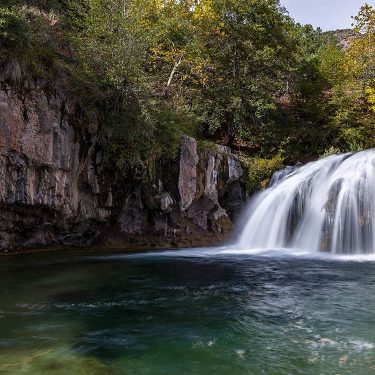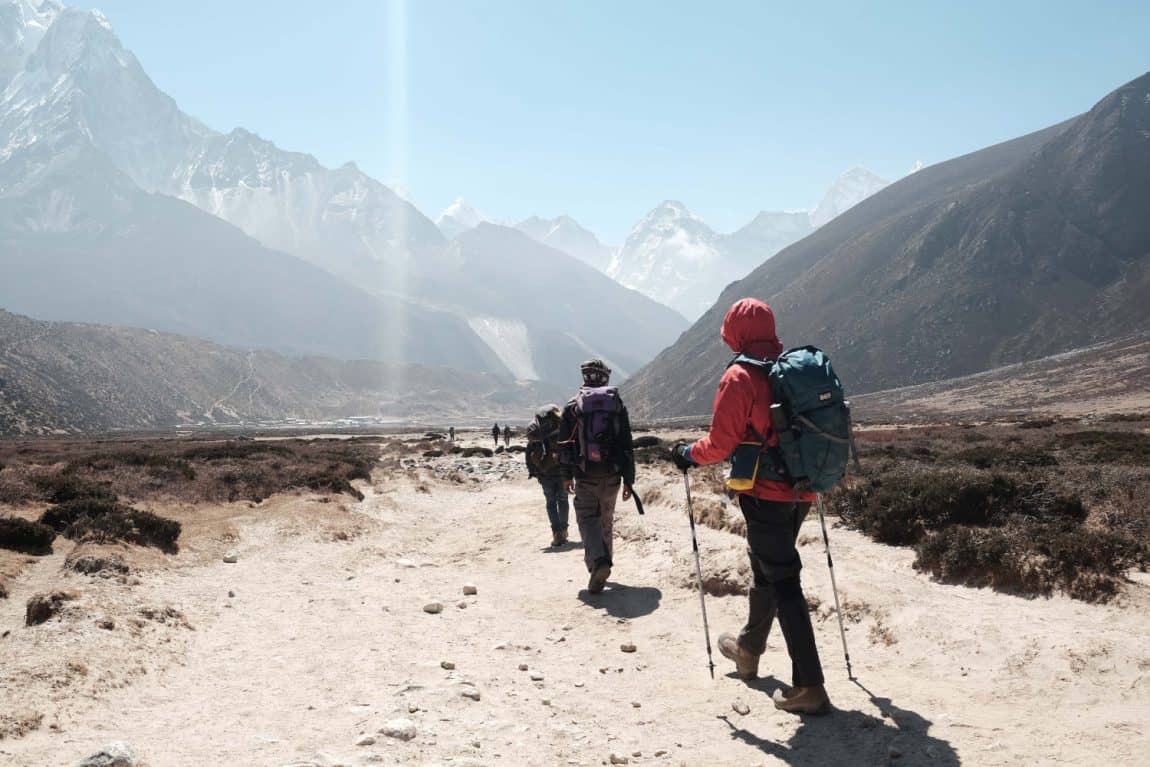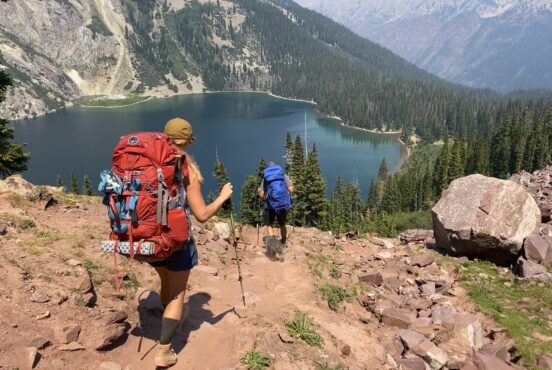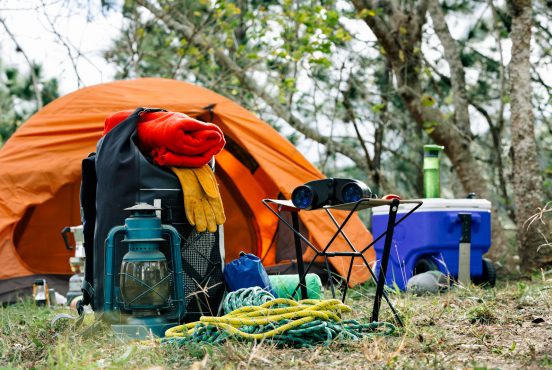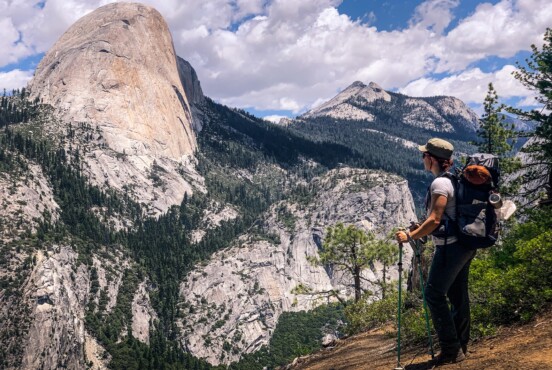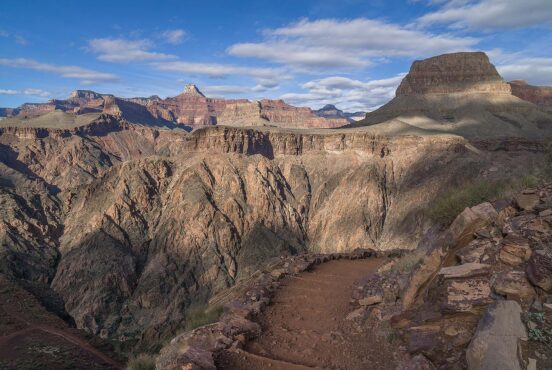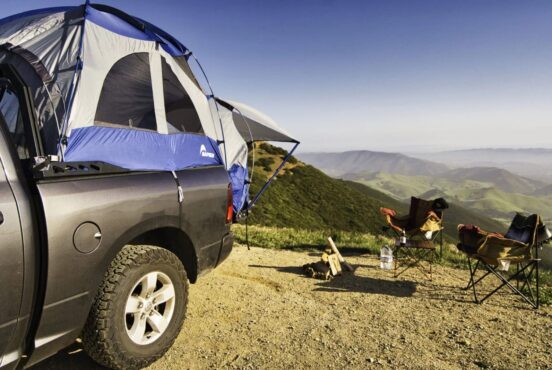Find your balance—and your stride—with trekking poles or hiking staffs, the easiest way to navigate tricky hiking terrain.
Simple math and physics reveal that four legs are better than two, which is why trekking poles are clutch for day hiking, backpacking, and mountaineering.
I didn’t start backpacking until my early 20s. Through that time, I admittedly eschewed poles. Even for my inaugural thru hike on the Appalachian Trail in 2011, I opted for a single pole because I thought two would be cumbersome. But after my 20th trip on the trail that ended in a bloodied forehead and a rolled ankle, my hiking partner couldn’t resist uttering “I told you so” while triumphantly pointing out his two poles.
Fast forward more than a decade and I’m probably the biggest proponent of trekking poles. I bring them on every hike from one mile with negligible elevation to power charges on near-vertical uphills. As a hiking guide, I encourage others to try them out—even if it is just one pole.
Between navigating uneven scree terrain to crossing treacherous rivers, these additives provide balance, prevent injuries, take weight and stress off your knees, and give your arms a wee bit of exercise. As with most pieces of gear, there’s a wide gamut of pole brands and types. For this article, we considered price, weight, packability, and features to choose our favorites on the market.

Our Top Picks: Best Trekking Poles
- Best Overall Trekking Poles: Komperdell Carbon FXP 4 Summit Vario Compact
- Best Trekking Pole Runner Up: Leki Makula FX Carbon AS
- Most Affordable Trekking Pole: Cascade Mountain Tech Carbon Fiber Quick Lock Trekking Pole
- Best Ultralight Trekking Pole: Gossamer Gear LT5
- Best Trekking Pole for Beginners: Mountainsmith Andesite
- Best Trekking Poles for All Seasons: G3 Pivot Trek
- Best Trekking Poles for Tarp Tent Users: Hilleberg Trekking Poles
- Best Trekking Poles for Mountaineering: Black Diamond Alpine Carbon Cork Whippet
***All weights are per pair. Weights are according to the manufacturer***
Best Overall: Komperdell Carbon FXP 4 Summit Vario Compact $229.95
I’m going to be transparent: Komperdell has always risen to the top of my pole roundup assignments through the years. Simply put, they make darn good products. I had a hard time selecting which Komperdell model I wanted to feature in this article, but the Carbon FXP 4 Summit Vario Compact really does stand out.
The signature trait on this trekking pole is its FXP folding mechanism. The individual segments are solidly connected through a tensioned cord and released for extension via an internal mechanical lock. Technical jargon aside: Komperdell simplified the design with fewer parts to break—thus making it lighter—yet the construction remains incredibly sturdy and durable. A push of two buttons—purposely recessed but big enough to press with gloved hands—collapses the pole to 15 inches, which warrants the choice for a carry-on versus checking a bag on flights.
At 14.8 ounces per pair, this carbon collapsible pole is not the lightest in the list, but it’s certainly not heavy. The aluminum alloy clamps allow a few inches of adjustment and are sturdy, as my tester has proven with close to 500 miles, much of which was off-trail for his job as a backcountry guide in Alaska. Other leading attributes include an extended EVA foam grip and a padded strap with a soft weave, as opposed to the nylon material found in most straps.
Tech Specs
- Weight: 14.8 ounces
- Packed Size: 15 inches
- Usable Size: 41-49 inches
- Construction: Three-section folding pole with a single aluminum flip lock
Pros & Cons
- Pro: Compact packability
- Pro: Ultralight weight
- Pro: Durable construction
- Con: Steep Price
- Con: Austrian company with few U.S. dealers
Runner Up: Leki Makula FX Carbon AS $239.95
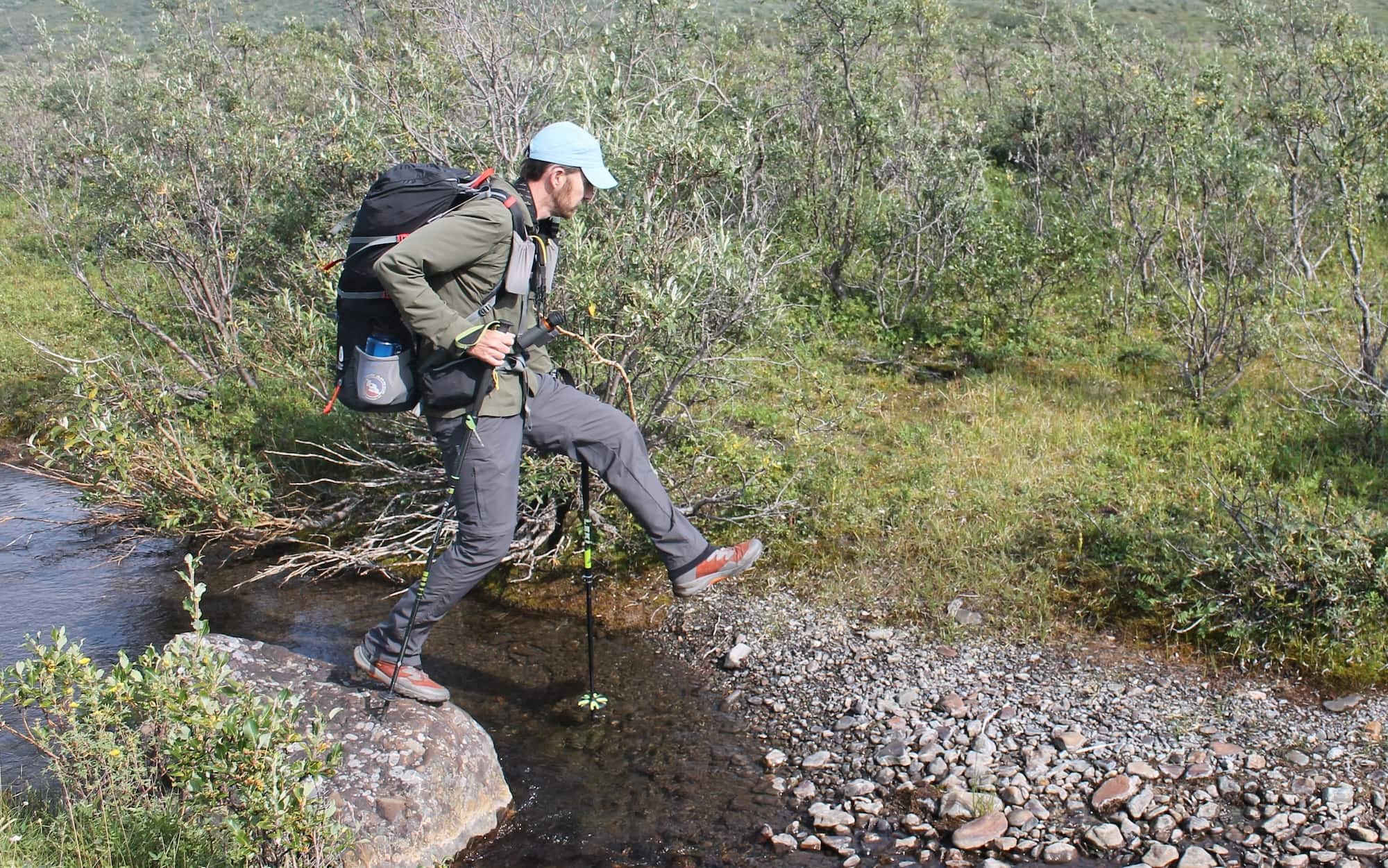
In 1974, Leki presented the world with the first adjustable trekking pole. Nowadays, the brand boasts several options, but the basic fundamentals of the original Leki Makalu remain unchanged. And similar to my opinion on Komperdell, Leki has often achieved brownie points for its performance in comparison with other poles over the years.
This specific version of the Makula has antishock features, which is definitely a personal preference. But for notoriously rocky trails, my testers applaud shock absorption and its role in balance and sturdy footing. Leki’s dynamic suspension system (DSS) is located in the lower aluminum shaft at the tip of the pole versus in the typical upper section of the pole, so really minimizes that impact to the knees and any arm soreness. Not many poles can support 200 pounds of body weight, plus a 35-pound backpack, but these do.
Another distinct quality is the brand’s angled handle and a rubberized backside for downhill control. Paired with an extended foam grip, the handles are supremely comfortable for changing hand positions when climbing and descending. Collapsing down to a mere 16 inches, the supershort packability means the poles store well even inside day packs.
If there are any complaints, it’s that I feel there is a bit of a learning curve to locking them into place—you have to fully extend the pole first with a tug to get it right.
Tech Specs
- Weight: 1 lb. 2 oz.
- Packed Size: 15.7 inches
- Usable Size: 43-51 inches
- Construction: Three-section folding pole with single lever lock
Pros & Cons
- Pro: Antishock mechanism
- Pro: Compact packability
- Pro: Ergonomic grip
- Con: Confusing assembly
- Con: Steep price
Most Affordable: Cascade Mountain Tech Carbon Fiber Quick Lock Trekking Pole $64.99
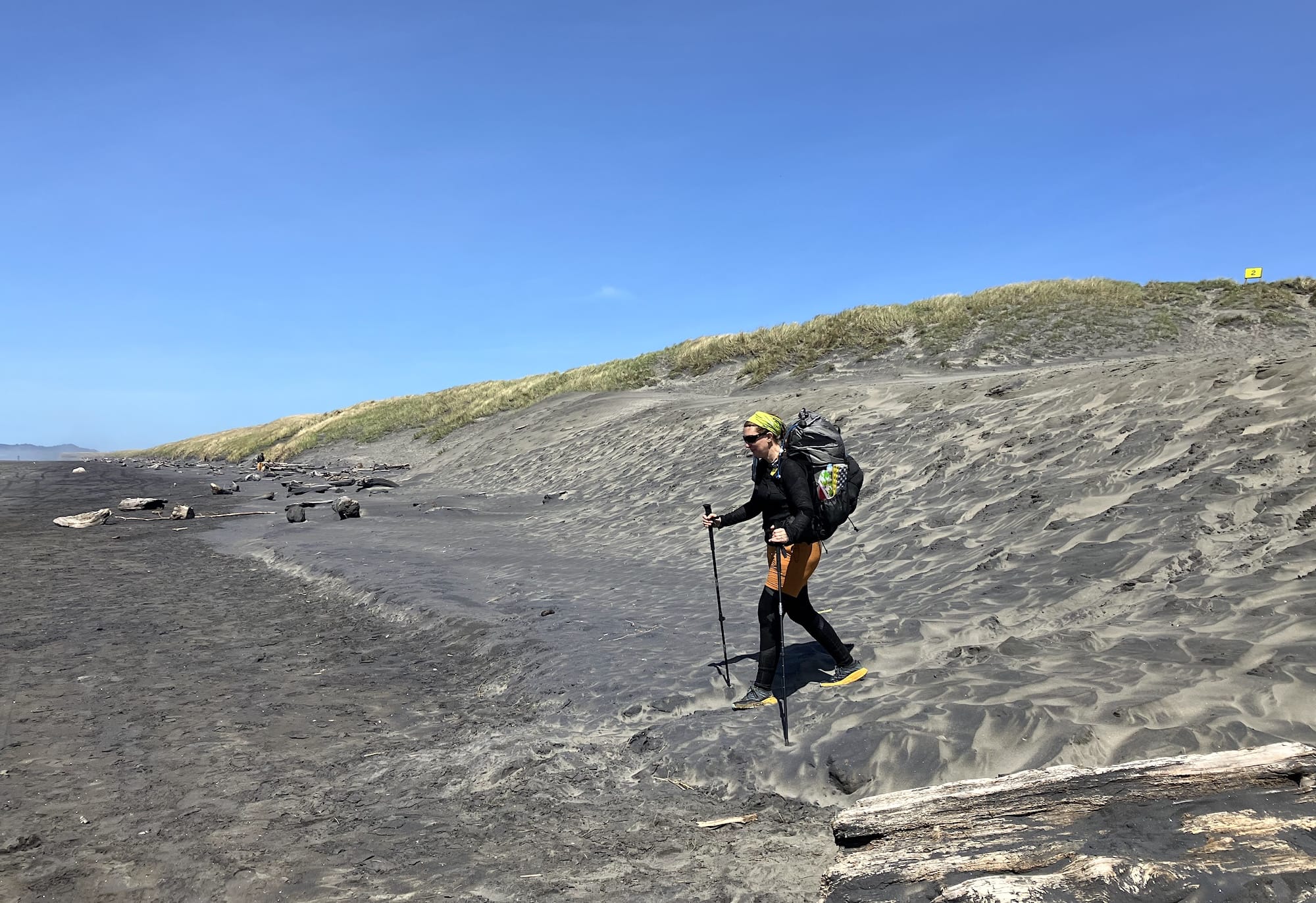
The sticker shock on this pair of telescoping carbon fiber poles is for the right reason—they fit within the bargain category. Cascade Mountain Tech’s business model operates on a credo to make the outdoors affordable for everyone, and their high product manufacturing rate yields lower prices on bulk materials, which translates to the right consumer price.
Many budget-friendly poles sport aluminum shafts and twist locks as the adjustment mechanism, but these utilize carbon for the shaft and double plastic flip locks for on-the-fly range of adjustment of 20+ inches. And at one pound per pair, they still fall into the lightweight category.
Other details are noticeable, such as interchangeable snow and trekking baskets and an ergonomic extended EVA foam grip and adjustable wrist strap. If you prefer cork handles, Cascade offers the same pair at the same price with a cork grip.
Durability-wise, I’ve personally put less than 100 miles on these poles, but I do trust their strength. As per usual with budget poles, the flip locks need tightening from time to time.
Tech Specs
- Weight: 16 ounces
- Packed Size: 26 inches
- Usable Size: 26-54 inches
- Construction: Telescoping pole with double plastic flip locks
Pros & Cons
- Pro: Lowest price for carbon poles
- Pro: Versatility with height adjustment and interchangeable baskets
- Con: Not very packable at 26 inches
Best Ultralight: Gossamer Gear LT5 $195

As featherlight as these telescoping carbon poles are coming in under 10 ounces, there’s no excuse not to add them to your backpacking kit. And light does not necessarily have to mean dainty.
The slim and simple construction of the carbon-fiber shaft tapers down and offers more than 20 inches of adjustability with a maximum of 51 inches—good enough for tarp tents. The three sections separate completely from each other, which is a plus for being able to properly clean out any dirt or debris.
More importantly, the two twist locks are reliable and the EVA foam handle—which looks like cork—is comfortable, all of which has been proven by100s of miles of testing through the years. If there is any gripe, our testers claimed the polyester strap was a tad scratchy.
Tech Specs
- Weight: 9.8 ounces
- Packed Size: 23.5 inches
- Usable Size: 23.5-51 inches
- Construction: Telescoping pole with double twist locks
Pros & Cons
- Pro: Lightest adjustable pole in test
- Pro: 20+ inches of adjustment
- Con: Not very packable
Best for Beginners: Mountainsmith Andesite $99.95
A long list of characteristics make these carbon fiber telescoping poles a premier choice for beginners. First and foremost, the affordable sub $100 price and sub-pound weight.
Though these are lightweight carbon fiber shafts, their durability performs like they are aluminum, as my tester proved when she hiked 1500 hard miles along the Continental Divide Trail. The single twist lock on these telescoping poles means there are fewer failure points, but neither the lock nor the shaft faltered, even when traversing boot-sucking mud and thigh-deep rivers. Our tester did admit you need to tighten the screws on the locking mechanism every once in awhile.
The formidable extended length of 55 inches is not only an advantage for hikers over 6 feet, but also pleases tarp-oriented backpackers. But there is one downside: These poles only collapse to 32 inches, which is giant compared with other poles.
Tech Specs
- Weight: 11.2 oz.
- Packed Size: 32 inches
- Usable Size: 32-55 inches
- Construction: Telescoping pole with single twist lock
Pros & Cons
- Pro: Affordable price
- Pro: Lightweight
- Pro: 20+ inches of adjustment
- Con: Not very packable
Best for All Seasons: G3 Pivot Trek $171
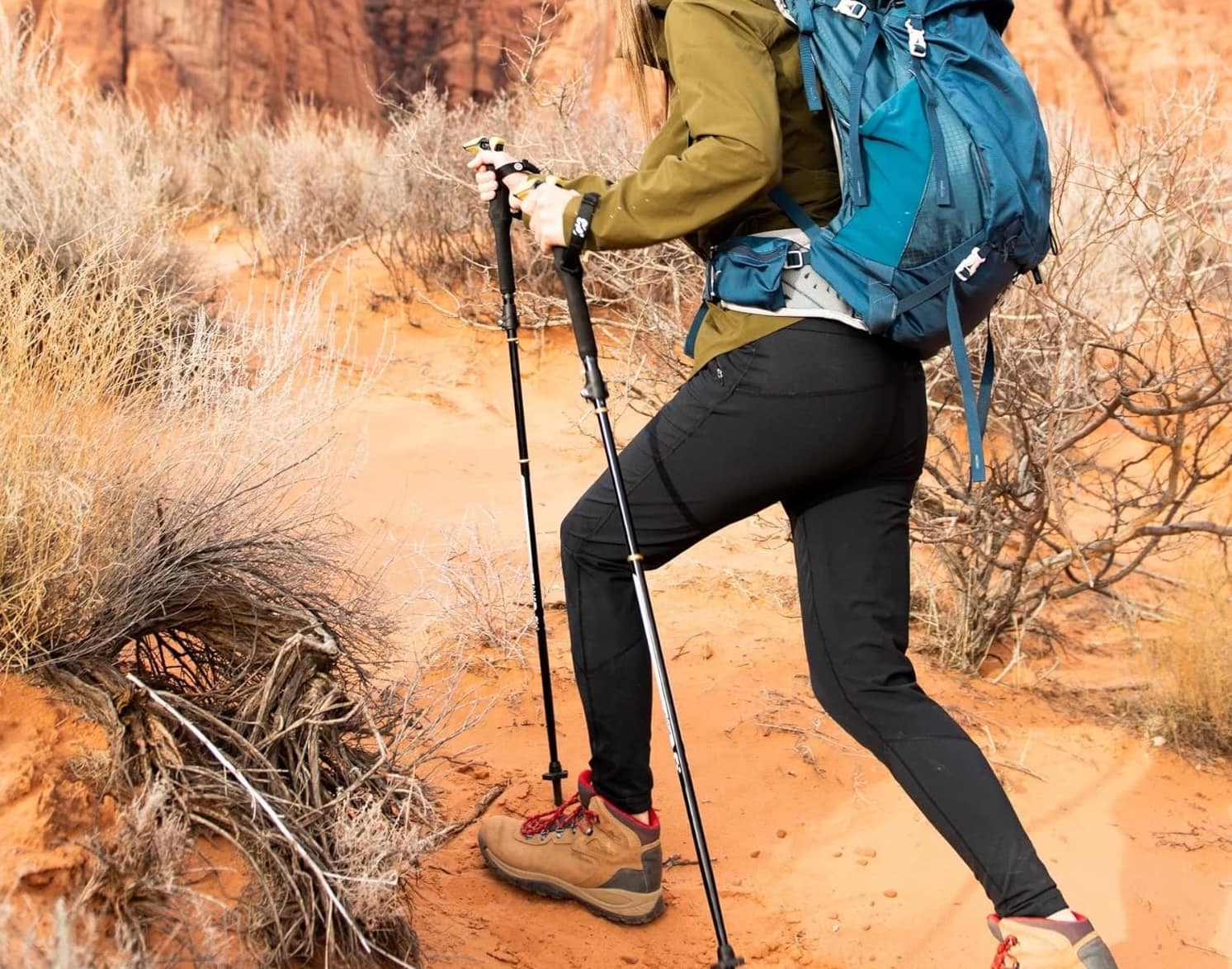
If you are looking for one pole through all the seasons, this would be it. This aluminum adjustable folding pole performs in deep snow and raging rivers with plenty of strength and durability. Other features that make these poles versatile include a hole on the handle to anchor guy lines while winter camping, interchangeable snow/trekking baskets (sold separately), and removable straps.
The handle pairs a plastic upper section with an extended foam grip for differing hand positions, comfort, and control. Additionally, the hard plastic hooked head on the handle works well for flipping heel risers on snowshoes. Tarp tent users and tall folks rejoice: there are two sizes available (short and long), which extend to 53 inches.
Thanks to their packable 15-inch length, they can be conveniently stowed, even in a 22-liter pack. What sets them apart is their storage mechanism, as the three-part poles nest into the handle and basket to lock securely into place. And for aluminum construction, the weight is still less than some of the carbon fiber poles in the test.
Tech Specs
- Weight: 1 lb. 6 oz. (long length)
- Packed Size: 15 inches (long length)
- Usable Size: 45-53 inches (long length)
- Construction: Telescoping pole with double twist locks
Pros & Cons
- Pro: Seasonal versatility thanks to several features
- Pro: Unique bundling design for compact hideaway
- Con: Snow baskets sold separately
- Con: Heavy
Best for Tarp Tent Users: Hilleberg Trekking Poles $178
I am not a tarp tent fan, but I recognize there are plenty of backpackers out there who favor the ultralight camp setup, which means they need their poles to report for double duty day and night. These telescoping poles have a few prime characteristics that make them more than suitable for that.
Most aluminum poles are constructed of 7075 aluminum, but these rely on DAC aluminum, which contains a higher-strength alloy component. This technology has proven its strength-to-weight ratio in tents, but it’s rarely found in poles and withstands the rigors of constant pounding on trail. Besides the sturdy construction, the telescoping pole has an extreme usable height of 57 inches, with 20 inches of adjustability.
The poles taper from top to bottom with double-cam levers with aluminum hinges in a vertical position, another pinnacle element. In our tests, even the most jarring pressure on the poles didn’t budge the locks. And as a bonus, their vertical position doesn’t seem to pick up as many plant hitchhikers when bushwhacking.
Tech Specs
- Weight: 1 lb. 1 oz.
- Packed Size: 25 inches
- Usable Size: 35.5-57 inches
- Construction: Telescoping pole with double flip locks
Pros & Cons
- Pro: 57-inch height is an outstanding aspect
- Pro: Constructed of stronger DAC aluminum
- Con: Not very packable
Best for Mountaineering: Black Diamond Alpine Carbon Cork Whippet $219.95
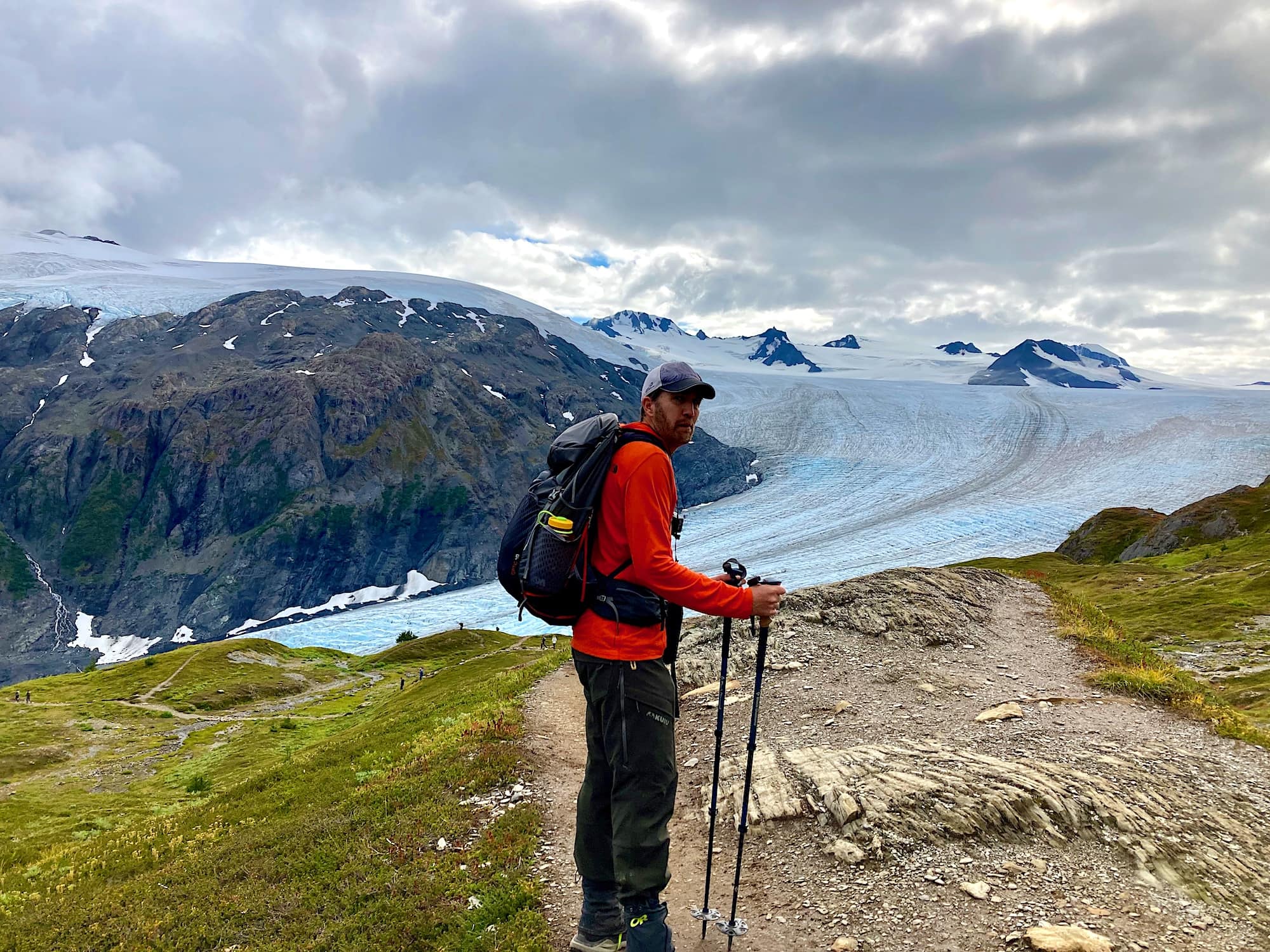
My biggest complaint about mountaineering is all the extra gear. I don’t often climb technical mountains, but my husband drags me along every once in a while. When Black Diamond released their whippet several years ago, I perked up. I love practicality.
The brand’s Whippet is a pared-down version of an ice axe. To be clear, it cannot replace an ice axe, but this lighter accessory offers a measure of safety as a precaution when traversing varied terrain with the potential for alpine snowfields, and you can use the Alpine Whippet to self-arrest.
This pole has the option to connect with four different accessories—all sold separately—including the Whippet, Alpine Whippet, and the Universal 1/4-20 adaptor, which enables a camera mount. The handle of the poles can also integrate seamlessly into the brand’s Distance Tarp Tent for ultralight, fast-packing overnight excursions.
With its 12 inches of adjustability, interchangeable trekking and snow baskets, and a handle combining a cork grip with extended EVA foam, this pole continues to exude diversity for four-season conditions.
Yet, the carbon fiber shaft combined with the two aluminum FlickLock Pro clamps still only adds up to just over a pound on the scales.
Tech Specs
- Weight: 17.6 oz (or 1 lb 1.6 oz)
- Packed Size: 24.8 inches
- Usable Size: 39-51 inches
- Construction: Telescoping pole with double aluminum flip locks
Pros & Cons
- Pro: Pole has versatile purposes with accessories
- Pro: Multi-season use
- Pro: Impressive weight-to-strength ratio
- Con: Steep price
- Con: Whippet accessories sold separately
- Con: Not very packable
What to Consider When Buying Trekking Poles
Through the years, medical studies have confirmed the benefits of trekking poles like preventing stress on knees and lower joints, burning more energy, and maintaining a faster and longer stride. So scientifically, there is a proven advantage to the utility of trekking poles. But I get it: they can be clumsy, especially when you are scrambling hand-over-foot on boulder fields. Poles will always be subjective for hikers and backpackers.
When perusing the options, there are three types: folding, telescoping, or fixed length. The telescoping are either two- or three-piece sections that taper down and collapse into themselves using either lever or twist locks. In contrast, folding poles divide into two or three parts, so are typically more packable and have more adjustability. We did not feature any fixed length poles, which mean the shaft is one piece and eliminates any moving parts to equate to less weight and sturdier construction. However, they are not packable or one size fits all, since they are not adjustable. Other pole aspects to consider would be price, weight, and the ergonomics of the handle and strap.
Why Trust Us
Patrice La Vigne has been writing about poles since 2016, and has personally tried all of the brands in the test. Beyond her personal experiences—which include two thru hikes totaling 4,000+ miles—she’s relied on the opinions of 10+ testers through the years. They are the boots on the ground, putting the poles through the ringer. From everyday use to long-distance hikes, the testing for this roundup spanned miles across the globe.
Plan Your Next Hike
Get epic travel ideas delivered to your inbox with Weekend Wanderer, our newsletter inspiring thousands of readers every week.
Seen in: Backpacking, Gear, Hikes

